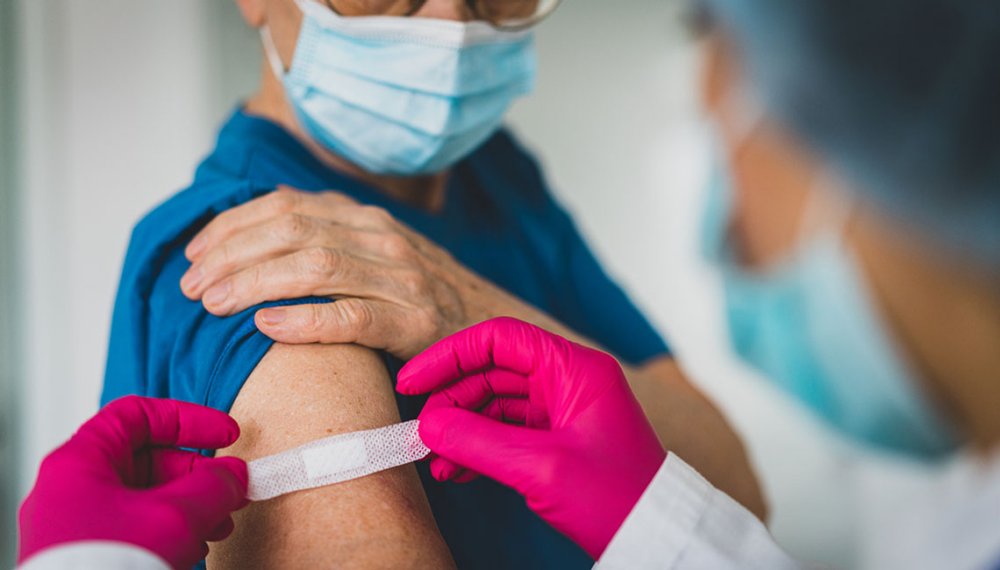‘Stealth’ Omicron: What You Need to Know About the BA.2 Subvariant
A sibling strain of the original — and highly contagious — omicron variant has reached the U.S.
The omicron surge is finally starting to lose some steam in the U.S. — new cases of COVID-19 are roughly half of what they were a week ago. But this improvement could be interrupted. Experts are tracking a subvariant of omicron that is behind an uptick of new infections in a handful of countries and slowed progress in others.
Its official name is BA.2, but some scientists have dubbed the subvariant “stealth omicron” because of a mutation that makes it show up differently than its sibling strain on lab tests. However, experts point out that the “stealth” in the name doesn’t imply the subvariant evades detection by lab-based and at-home tests — it doesn’t — but rather that test results don’t mimic the original omicron variant precisely.
Here’s what we know so far about BA.2 and its potential impact on the state of the pandemic in the U.S.
Its presence is growing
The subvariant was first identified around the same time as omicron, also known as BA.1, “but we didn’t really see a lot of cases of it,” said Egon Ozer, M.D., an assistant professor at Northwestern’s Feinberg School of Medicine and director of the Center for Pathogen Genomics and Microbial Evolution in the Havey Institute for Global Health. “It really was the first version, BA.1, that spread around the globe and caused surges.”
Cases of COVID-19 caused by BA.2, however, are on the rise in a handful of countries, including Denmark and the U.K. The subvariant has also been detected in the U.S. and so far accounts for about 1.5 percent of new cases, Centers for Disease Control and Prevention (CDC) Director Rochelle Walensky said on Feb. 2. Some scientists estimate the number is higher.
BA.2 may be more contagious
There is “growing evidence” that BA.2 is more transmissible, or contagious, than the original omicron variant, Mark McClellan, M.D., director of the Duke-Margolis Center for Health Policy, said during a media briefing, pointing to places in Europe “where BA.2 has now taken over much of the continuing caseload.”
For example, the BA.2 variant went from making up about 20 percent of all new coronavirus infections in Denmark to nearly half in a matter of weeks, according to the Statens Serum Institut, a public health and research agency under the Danish Ministry of Health.
However, the CDC’s Walensky said even if BA.2 is more transmissible than omicron, “it’s not nearly the transmission advantage that we’ve seen between omicron and delta.” A study out of Denmark that has yet to be peer reviewed found omicron to be between 2.7 and 3.7 times more infectious than delta, which was already declared by the CDC to be twice as contagious as previous variants.
It doesn’t appear to affect severity and immunity
There’s “no indication” that BA.2 causes more severe illness than the original omicron strain, the World Health Organization’s Maria Van Kerkhove said on Feb. 1, although she added that the data on the subvariant so far “is really quite limited.”
While omicron has infected and sickened a record number of people, studies show that it appears to cause less severe illness, overall, compared to its predecessor, delta. Health officials continue to stress, however, that just because omicron may be milder does not mean it’s mild, and that the variant still presents a danger to many, especially unvaccinated individuals and people at higher risk for complications from COVID-19.
Another plus: Research is ongoing, but it looks as though BA.2 doesn’t have any vaccine-evading advantages, meaning it likely can’t slip past the vaccines’ defenses any better than omicron, whose mutations already give the vaccines more of a challenge. (That’s why a booster shot has been strongly recommended during the omicron wave. The extra dose helps to strengthen immunity and further enhance protection, studies show.)
BA.2 “seems to be about on the same level as the original omicron,” Ozer said. Because of this, Walensky has said that when it comes to the subvariant, “our vaccines will work just like it has with omicron.”
Studies out of the U.K. show that protection against experiencing symptoms from a coronavirus infection caused by BA.1 was about 9 percent after two doses of the mRNA vaccines; for BA.2 it was about 13 percent. After a booster, those numbers jumped to 63 percent protection against symptomatic illness caused by BA.1 and 70 percent for BA.2. Protection against death caused by an omicron infection was 95 percent in boosted people age 50 and older, the same research shows.
BA.2 could stall pandemic progress
One of the biggest concerns among health experts when it comes to BA.2 is the wrench it could throw into a swift exit from the omicron wave. The U.K., for example, saw a steep decline in COVID-19 cases in mid-January. That progress, however, plateaued right as cases of BA.2 increased in circulation.
“In some countries, like Denmark, cases have gone up associated with BA.2, but that’s also in the context of relaxing mitigation measures,” Walensky said.
In the U.S., Duke’s McClellan said he doesn’t see the subvariant “really fundamentally changing the picture.” What it might do is “push the clock back a little more,” Ozer added.
“I know everybody is waiting for that day that we can take off our masks again and we can go and do all the things we were doing in 2019. And I just don’t think we’re quite there yet,” he said.
Slowing transmission is key
Ozer’s advice: Don’t get complacent. And remember, we have the power to prevent some of these transmissions from happening. Vaccination is one way. “The data does suggest, and fairly strongly, that vaccination and boosting has prevented more infections,” Ozer said.
Masking in public indoor settings and avoiding crowds and poorly ventilated spaces can also help thwart transmission of the virus, including the new subvariant.
“One of the best ways for us to be able to stop this pandemic is just to keep the transmissions down, and that will also help prevent the emergence of new variants,” Ozer said. “If the virus can’t transmit between people, then there’s that many fewer chances for it to adapt and change and become better at what it does.”
Rachel Nania writes about health care and health policy for AARP. Previously she was a reporter and editor for WTOP Radio in Washington, D.C. A recipient of a Gracie Award and a regional Edward R. Murrow Award, she also participated in a dementia fellowship with the National Press Foundation.





